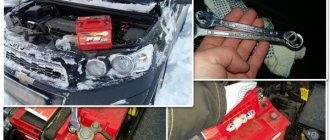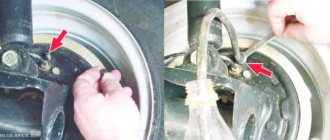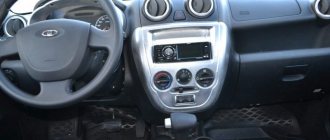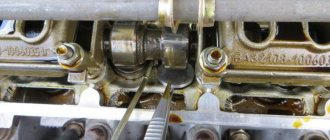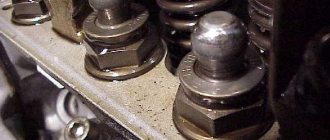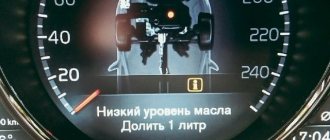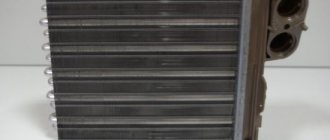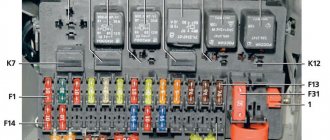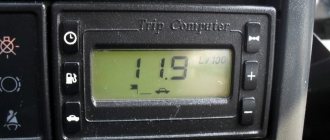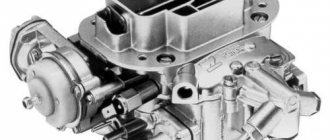Since gas-cylinder equipment is just gaining popularity in our country, many car enthusiasts still do not have a clear idea of how to fill a car with gas. Gas is an aggressive type of fuel, so during the refueling process you must strictly follow safety precautions and procedures.
Since gas-cylinder equipment is just gaining popularity in our country, many car enthusiasts still do not have a clear idea of how to fill a car with gas. To avoid negative consequences, you need to be extremely careful during the refueling process.
Safety requirements at gas filling stations
Due to the high pressure of gas engine fuel, filling of cylinders takes place with additional precautions. Therefore, the refueling process, as well as the equipment used for this, differ from the usual gasoline or diesel scheme.
The operation of gas stations is regulated by a number of regulatory documents. The general requirements for safe operation for CNG filling stations and gas filling stations are regulated by Rostechnadzor Order No. 559 of December 11, 2014 “Safety Rules for Autogas Gas Filling Stations with Natural Gas Motor Fuel”, where paragraphs 110-113 read:
- Vehicles with faulty gas equipment are not allowed to enter the territory of the gas station.
- cylinders are subject to inspection in accordance with the Industrial Safety Rules for hazardous production facilities that use equipment operating under excess pressure and the operating documents of the manufacturer
- cylinders must be firmly secured and hermetically connected to the gas pipelines of the vehicle’s fuel system
- It is not allowed to refill cylinders installed on vehicles that:
- the periodic inspection period has expired;
- there are no established inscriptions;
- valves and valves are faulty;
- the cylinder body is damaged (sinks, nicks, corrosion, dents);
- the cylinder fastening is loose;
- there are leaks from the connections.
The remaining rules are established in accordance with internal production documents and instructions.
When entering the gas station territory, the driver must:
- disembark passengers
- When moving through the gas station territory, observe traffic rules, speed limits (not higher than 5 km/h) and traffic patterns
- do not violate the distance between cars in line (at least 15 m).
Entry into the territory of a refueling box or island occurs with the permission of the operator, according to the instructions of the light alarm (if available) or on a first-come, first-served basis.
After placing the car at a refueling station, the driver is obliged to:
- turn off/stop the engine
- engage the parking brake
- remove the key from the ignition
- leave the cabin/salon of the car
- clean the filling device and provide access to it
When refueling a car with LPG, the following is prohibited:
- smoking and using open fire
- repair of cars or gas equipment, including tightening of fasteners of pressure components
- switching from one type of fuel to another
- impacts with metal objects on gas system parts
Filling a vehicle with gas must be carried out directly by the filler operator or the vehicle driver under the supervision of the operator.
How much to fill
When filling a container with gas, keep in mind that there is already pressure in the system, limiting the volume by an average of 20%. In other words, you can fill up to 80% of the actual capacity. So, about 33-35 liters will fit in a 40-liter tank. There is a cut-off switch installed on the cylinder that turns off the gas supply when completely filled. Its absence increases the risks for the car owner, as the likelihood of an explosion increases.
Fueling a car with LPG is a simple process, but it requires compliance with safety rules and following the above instructions. When performing work, use only a serviceable adapter, periodically monitor the condition of the system and undergo maintenance.
In the comments, share your experience of visiting the gas station by car or the intricacies of refueling from a cylinder.
What documents are needed for gas equipment for refueling?
Before refueling, the driver is required to document the possibility of safe use of the vehicle with gas equipment.
For vehicles with factory-installed gas equipment, as well as vehicles that have undergone conversion of fuel systems, it is usually sufficient to provide the cylinder filler/refueler with:
- passport of the gas cylinder(s), which will indicate the service life, as well as information on re-examination of the container
- certificate of form 2b on the conduct of periodic tests of gas equipment installed on a vehicle (for cylinders that have undergone routine inspection).
Also, drivers of vehicles owned by legal entities. persons may be required to show a waybill with a note about the serviceability of the equipment, a vehicle diagnostic card (technical inspection) and a certificate of completion of safety training when working with gas equipment.
License for drivers of cars with LPG
How to check the fuel dispenser before using it?
A visual inspection of the fuel dispenser allows you to determine:
- no external damage to the body;
- clarity of inscriptions on the plate and marks on devices for one-time and total accounting of fuel supplied;
- cleanliness of glass on petroleum product release metering devices.
Equipment testing stages:
- turning on the electric motor;
- turning on the pump, filling the hydraulic system with fuel;
- holding the column under pressure with the pump turned on and the dispensing valve closed, stopping the pump, holding for one minute;
- checking connections.
When inspecting the connections between the fuel dispenser and the dispensing valve, not even traces of fuel should be observed.
How are cylinders filled with methane?
Depending on the type of gas filling station of the CNG filling station, as well as the type of car refueling device, the procedure for refueling with methane may differ slightly.
After placing the car in the refueling island and taking all the safety measures indicated above, you must:
- be sure to close the main gas valve, if there is one in the system (usually found on trucks and buses)
- the gas distribution column can be equipped with a tap for a GOST RF filling device or for a European standard fitting (NGV1/2), which are equipped with cars with methane gas equipment.
Filling device for methane GOST (18 mm)
Filling fitting (NGV1) for Euro gun
In the first option, you need to remove the plug from the car's memory. If you cannot remove the plug, you must first loosen the plug screw to release the pressure.
In the second case, you just need to remove the plastic cap from the refill.
When the GNK tap does not match the type of vehicle filling device, you will need to install a special adapter from one standard to another.
Adapter from Euro to GOST and adapter fitting to Euro standard
- install the gas dispensing valve in the charger
- open the valve of the filling device. There is no need to do anything with the Euro fitting, provided that it is not equipped with a tap
Filling valve EMER (Russian standard)
- Turn the column lever to the “open” position. On more modern speakers, move the toggle switch to the “refueling” position.
Methane gas generators
There are also GRKs where you need to turn the lever/flag directly on the gas filling valve
- then you need to hand over the documents to the station employee for verification and confirm readiness for refueling
- Next comes payment for fuel. The final volume of CNG will be known only after the cylinders are filled, so CNG filling stations operate on a pre-payment system. If you need to refuel to a full tank, before starting filling, an approximate amount of money is paid to the operator or through the terminal, and after refueling is completed, the excess funds are returned (in cash or to a card, respectively).
When a certain amount of CNG is required to be pumped, the required volume of gas (in cubic meters) is called, followed by an advance payment. It is also possible to refuel for a specific amount of money or using a fuel card (Gazprom has an EcoGas card).
In addition, at modern CNG filling stations you can pay directly through the Yandex navigator application. The advantage of such a refill is the convenience of paying and tracking the filling process directly from your phone. In addition, the program automatically enters the parameters of the cylinders into the database, and during subsequent refills the station operator already sees all the information. This solution reduces the speed of CNG filling, which is usually attributed to the disadvantages of methane gas equipment.
- press the green button until the sound signal (if available) and move away to a safe distance from the gas station (at least 10 m). In this case, the car must be in the driver’s line of sight for visual monitoring of the tightness of connections, and the driver must be in the field of view of the station operator
- wait for the filling to finish
- make final payment
- Then go to the column, press the red “stop” button and close the charging valve (if both are present). If the filler has a non-return valve, then it is not necessary to close the valve
- put the lever/toggle switch of the main gearbox in the “reset” mode. After degassing, turn the lever to “closed” position (if equipped).
If the pressure relief column is directly on the filling tap, release the gas by turning the pistol lever
- disconnect the gas dispensing valve from the vehicle's charger, securing it to the hydraulic valve holder
- remove the adapter (if installed), install the filler cap.
- Verify by ear the tightness of the gas equipment fittings and the correct operation of the control and measuring instruments. The operating pressure of the system according to the pressure gauge should correspond to 20 MPa (200 bar).
- start the car engine and leave the territory of the CNG filling station.
When should you go to a gas station to replenish your fuel supply?
You should not wait for the moment when the light indicating a low fuel level starts blinking and the gauge needle approaches zero. It is advisable to refuel the car when the volume of fuel is less than half the volume of the tank.
If the sensor is not calibrated, its readings may be incorrect. There are several signs indicating a decrease in the amount of fuel below the permissible level:
- The appearance of extraneous noise in the engine with knocking.
- Additional vibration of the car resulting from a lean mixture.
- Deterioration in smoothness of movement with the gas pedal in the same position.
- Reduced vehicle power.
Gas. Where is it used, why is it so popular
Today, liquefied gas mixture is the most popular form of fuel raw material. It is widely used not only in many areas of industry, but also in everyday life. The use of gas cylinders is an excellent way to satisfy a wide variety of needs, for example, household needs (in gas stoves), in heating equipment (in the installation of certain types of batteries), in organizing ventilation passages, and air conditioning. By the way, it has also found wide application in ensuring the operation of household appliances, for example, refrigerators. But the most popular form of consumption is industrial use in cars. As a raw material, gas is very practical and easy to use: it requires refueling much less often than gasoline cars. The only disadvantage is the danger of refueling, which consists in a high probability of ignition, so gas storage is carried out in cylinders, which, due to their density and resistance to high temperatures, reduce the risk of ignition.
Why is gas so popular?
Types and features of gas storage cylinders
Manufacturers produce several types of steel cylinders of different volumes: 5, 15, 25 and 50 liters. Weight – from 4 to 22 kg. For example, a 50 liter cylinder weighs 44 kg. Recently, cylinders made of polymer composite materials in volumes of 14 or 33 liters have been developed and produced.
Types of tanks for household use
Based on the material from which the body is made, cylinders for household use are divided into the following groups:
- Steel cylinders are strong and durable. Their vulnerable point is the welding seams, therefore, when purchasing and inspecting, great attention is paid to the inspection of welding seams. It is recommended to choose the right place to install the equipment, excluding places of high humidity, so as not to corrode steel models.
- Composite containers. This is a more modern option. A composite gas cylinder is also quite durable and costs 2-3 times more due to the high cost of materials containing fiberglass. Additional body protection enhances strength.
Polymer cylinders are easier to transport because they weigh less and are less subject to deformation when impacted or dropped. Another advantage of polymer equipment is high thermal stability. It may be near a fire.
How do color and purpose relate?
According to GOST rules, the color of the cylinder determines its purpose:
- white ones with yellow inscriptions are filled with acetylene;
- red - for propane;
- blue – for medical or regular oxygen;
- dark green ones store hydrogen;
- in gray with black elements - nitrous oxide.
For use in our domestic conditions and regular replenishment of liquefied fuel, only red tanks with appropriate markings are suitable.

